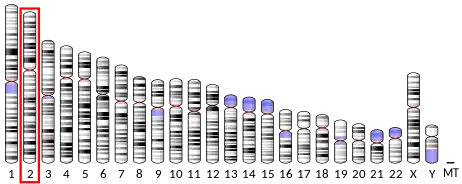| PTH2R | |||||||||||||||||||||||||||||||||||||||||||||||||||
|---|---|---|---|---|---|---|---|---|---|---|---|---|---|---|---|---|---|---|---|---|---|---|---|---|---|---|---|---|---|---|---|---|---|---|---|---|---|---|---|---|---|---|---|---|---|---|---|---|---|---|---|
| Identifiers | |||||||||||||||||||||||||||||||||||||||||||||||||||
| Aliases | PTH2R, PTHR2, parathyroid hormone 2 receptor | ||||||||||||||||||||||||||||||||||||||||||||||||||
| External IDs | OMIM: 601469 MGI: 2180917 HomoloGene: 3701 GeneCards: PTH2R | ||||||||||||||||||||||||||||||||||||||||||||||||||
| |||||||||||||||||||||||||||||||||||||||||||||||||||
| |||||||||||||||||||||||||||||||||||||||||||||||||||
| |||||||||||||||||||||||||||||||||||||||||||||||||||
| |||||||||||||||||||||||||||||||||||||||||||||||||||
| |||||||||||||||||||||||||||||||||||||||||||||||||||
| Wikidata | |||||||||||||||||||||||||||||||||||||||||||||||||||
| |||||||||||||||||||||||||||||||||||||||||||||||||||
Parathyroid hormone 2 receptor is a protein that in humans is encoded by the PTH2R gene.[5]
Function
The protein encoded by this gene is a member of the G protein-coupled receptor family 2. This protein is a receptor for parathyroid hormone (PTH). This receptor is more selective in ligand recognition and has a more specific tissue distribution compared to parathyroid hormone 1 receptor (PTH1R). It is activated by PTH but not by parathyroid hormone-like hormone (PTHLH) and is particularly abundant in the brain and pancreas.[5]
The molecular interaction of the PTH2 receptor with the peptide TIP39 has been characterized in full 3D molecular detail, identifying among other residues Tyr-318 in transmembrane helix 5 as a key residue for high affinity binding.[6]
See also
References
- 1 2 3 GRCh38: Ensembl release 89: ENSG00000144407 - Ensembl, May 2017
- 1 2 3 GRCm38: Ensembl release 89: ENSMUSG00000025946 - Ensembl, May 2017
- ↑ "Human PubMed Reference:". National Center for Biotechnology Information, U.S. National Library of Medicine.
- ↑ "Mouse PubMed Reference:". National Center for Biotechnology Information, U.S. National Library of Medicine.
- 1 2 "Entrez Gene: PTH2R parathyroid hormone 2 receptor".
- ↑ Weaver RE, Mobarec JC, Wigglesworth MJ, Reynolds CA, Donnelly D (2017). "High affinity binding of the peptide agonist TIP-39 to the Parathyroid hormone 2 (PTH2) receptor requires the hydroxyl group of Tyr-318 on transmembrane helix 5". Biochemical Pharmacology. 127: 71–81. doi:10.1016/j.bcp.2016.12.013. PMC 5303546. PMID 28012961.
Further reading
- Usdin TB, Gruber C, Bonner TI (1995). "Identification and functional expression of a receptor selectively recognizing parathyroid hormone, the PTH2 receptor". J. Biol. Chem. 270 (26): 15455–8. doi:10.1074/jbc.270.26.15455. PMID 7797535.
- Usdin TB, Modi W, Bonner TI (1997). "Assignment of the human PTH2 receptor gene (PTHR2) to chromosome 2q33 by fluorescence in situ hybridization". Genomics. 37 (1): 140–1. doi:10.1006/geno.1996.0532. PMID 8921382.
- Clark JA, Bonner TI, Kim AS, Usdin TB (1998). "Multiple regions of ligand discrimination revealed by analysis of chimeric parathyroid hormone 2 (PTH2) and PTH/PTH-related peptide (PTHrP) receptors". Mol. Endocrinol. 12 (2): 193–206. doi:10.1210/mend.12.2.0063. PMID 9482662.
- Hoare SR, Clark JA, Usdin TB (2000). "Molecular determinants of tuberoinfundibular peptide of 39 residues (TIP39) selectivity for the parathyroid hormone-2 (PTH2) receptor. N-terminal truncation of TIP39 reverses PTH2 receptor/PTH1 receptor binding selectivity". J. Biol. Chem. 275 (35): 27274–83. doi:10.1074/jbc.M003910200. PMID 10854439.
- John MR, Arai M, Rubin DA, et al. (2002). "Identification and characterization of the murine and human gene encoding the tuberoinfundibular peptide of 39 residues". Endocrinology. 143 (3): 1047–57. doi:10.1210/endo.143.3.8698. PMID 11861531.
- Strausberg RL, Feingold EA, Grouse LH, et al. (2003). "Generation and initial analysis of more than 15,000 full-length human and mouse cDNA sequences". Proc. Natl. Acad. Sci. U.S.A. 99 (26): 16899–903. Bibcode:2002PNAS...9916899M. doi:10.1073/pnas.242603899. PMC 139241. PMID 12477932.
- Seeliger S, Hausberg M, Eue I, et al. (2003). "The parathyroid hormone-2 receptor is expressed on human leukocytes and down-regulated in hyperparathyroidism". Clin. Nephrol. 59 (6): 429–35. doi:10.5414/CNP59429. PMID 12834174.
- Bisello A, Manen D, Pierroz DD, et al. (2004). "Agonist-specific regulation of parathyroid hormone (PTH) receptor type 2 activity: structural and functional analysis of PTH- and tuberoinfundibular peptide (TIP) 39-stimulated desensitization and internalization". Mol. Endocrinol. 18 (6): 1486–98. doi:10.1210/me.2003-0487. PMID 14988434.
- Gerhard DS, Wagner L, Feingold EA, et al. (2004). "The status, quality, and expansion of the NIH full-length cDNA project: the Mammalian Gene Collection (MGC)". Genome Res. 14 (10B): 2121–7. doi:10.1101/gr.2596504. PMC 528928. PMID 15489334.
- Mahon MJ, Shimada M (2005). "Calmodulin interacts with the cytoplasmic tails of the parathyroid hormone 1 receptor and a sub-set of class b G-protein coupled receptors". FEBS Lett. 579 (3): 803–7. doi:10.1016/j.febslet.2004.12.056. PMID 15670850. S2CID 6471940.
- Weaver RE, Mobarec JC, Wigglesworth MJ, Reynolds CA, Donnelly D (2017). "High affinity binding of the peptide agonist TIP-39 to the Parathyroid hormone 2 (PTH2) receptor requires the hydroxyl group of Tyr-318 on transmembrane helix 5". Biochemical Pharmacology. 127: 71–81. doi:10.1016/j.bcp.2016.12.013. PMC 5303546. PMID 28012961.
External links
- "Parathyroid Hormone Receptors: PTH2". IUPHAR Database of Receptors and Ion Channels. International Union of Basic and Clinical Pharmacology.
- Receptor,+Parathyroid+Hormone,+Type+2 at the U.S. National Library of Medicine Medical Subject Headings (MeSH)
This article incorporates text from the United States National Library of Medicine, which is in the public domain.




